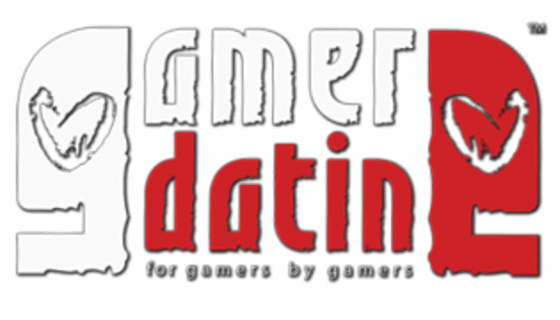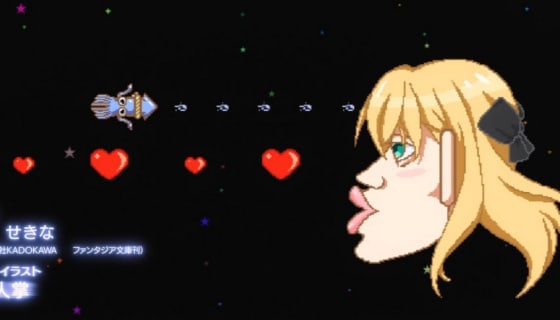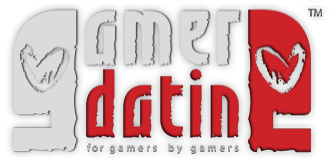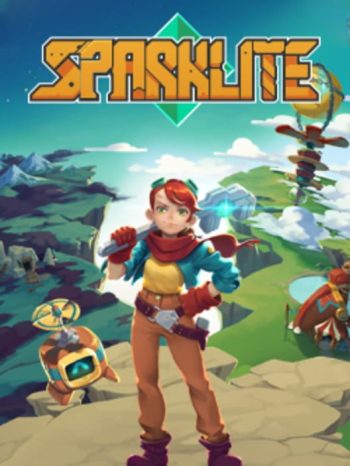A fun, casual roguelike with a few things to be hammered out.
Where does Sparklite fit within the roguelike genre? The press release I was given described it as ‘a unique blend of approachable roguelike elements’, and I’d agree with that. This is definitely at the easier end of the roguelike spectrum, thanks to its short length and forgiving design, and that’s no bad thing.
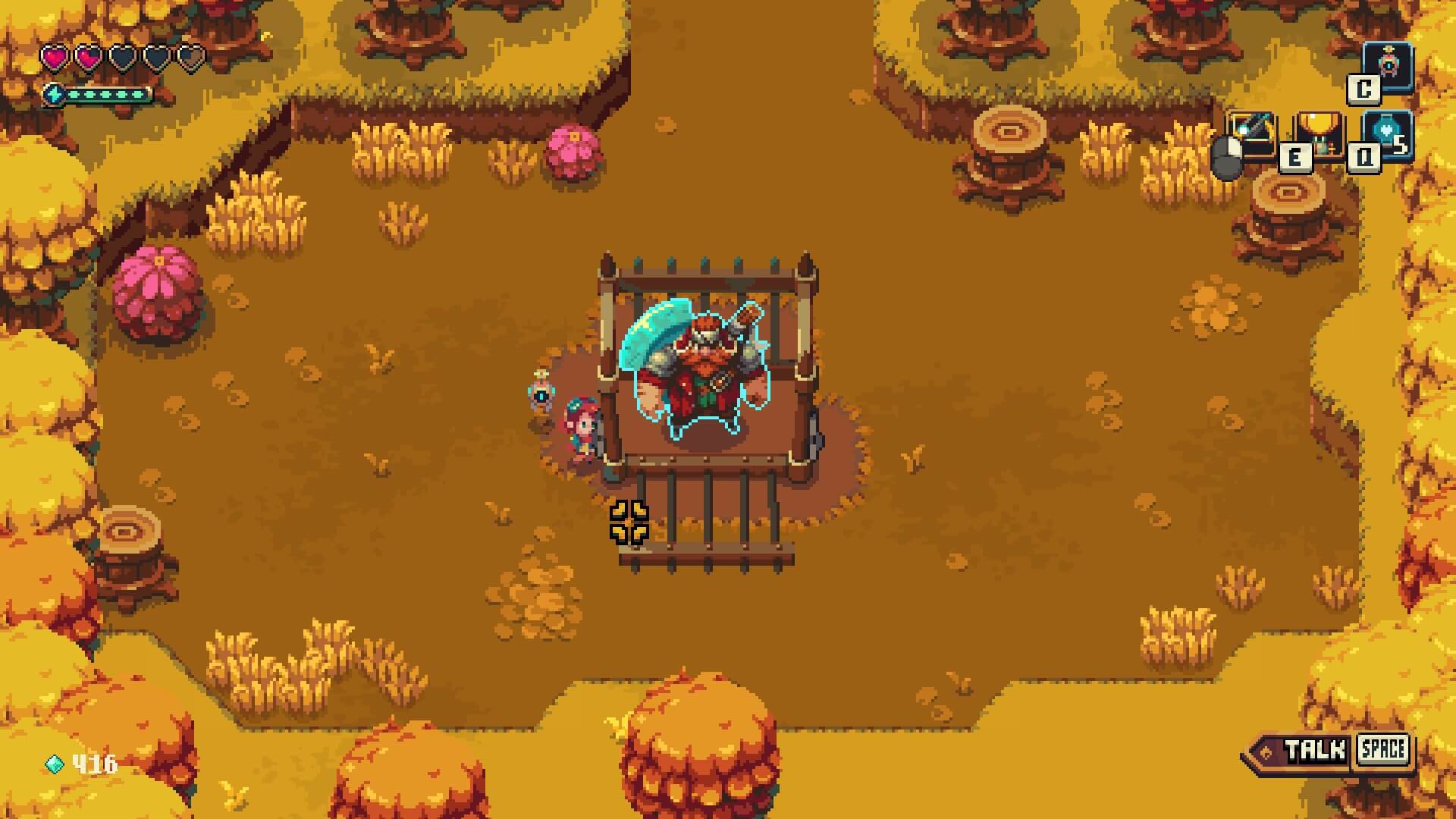
Everything is there to see, but nothing seems more important than anything else.
ver the nine or so hours it took me to finish the PC version, I was treated to a story which didn’t wear out its welcome, and did a decent job of creating an interesting, if shallow, world. There were no mind-blowing revelations (by which I mean anyone paying attention to the lore as it unfolds will stand a good chance of seeing the twist before it happens) but the story served its purpose and got me from area to area on a coherent path. That’s all well and good you might be thinking, but we’re not here for a discussion about the game’s story, what about the actual gameplay?
Sparklite is a good casual rogue-like
Let’s tackle the obvious first. This is a roguelike, so what does that actually mean for the game? Every time you die, the world changes. The game does a pretty good job of giving this an in-world explanation, but in its purest form this means that the labyrinth you’ve explored is re-arranged; some geo-tiles are swapped out, others are moved around and any progress you’ve made in terms of exploration is reset. So far, so roguelike.
That unique blend though? Whenever you die, you are brought back to the Refuge, a floating city, where you can spend the sparklite (both a currency and a fuel source) that you collected during your previous life. Sparklite can be spent on upgrading a handful of buildings, to purchase a series of upgrades for your character, Ada, and to construct the items you find scattered throughout the game-world in a metroidvania-esque series of dungeons. Some items are ranged weapons and serve as a limited-resource-based alternative to the wrench that Ada carries as her main weapon, whilst others allow you to overcome environmental obstacles and progress to new areas.
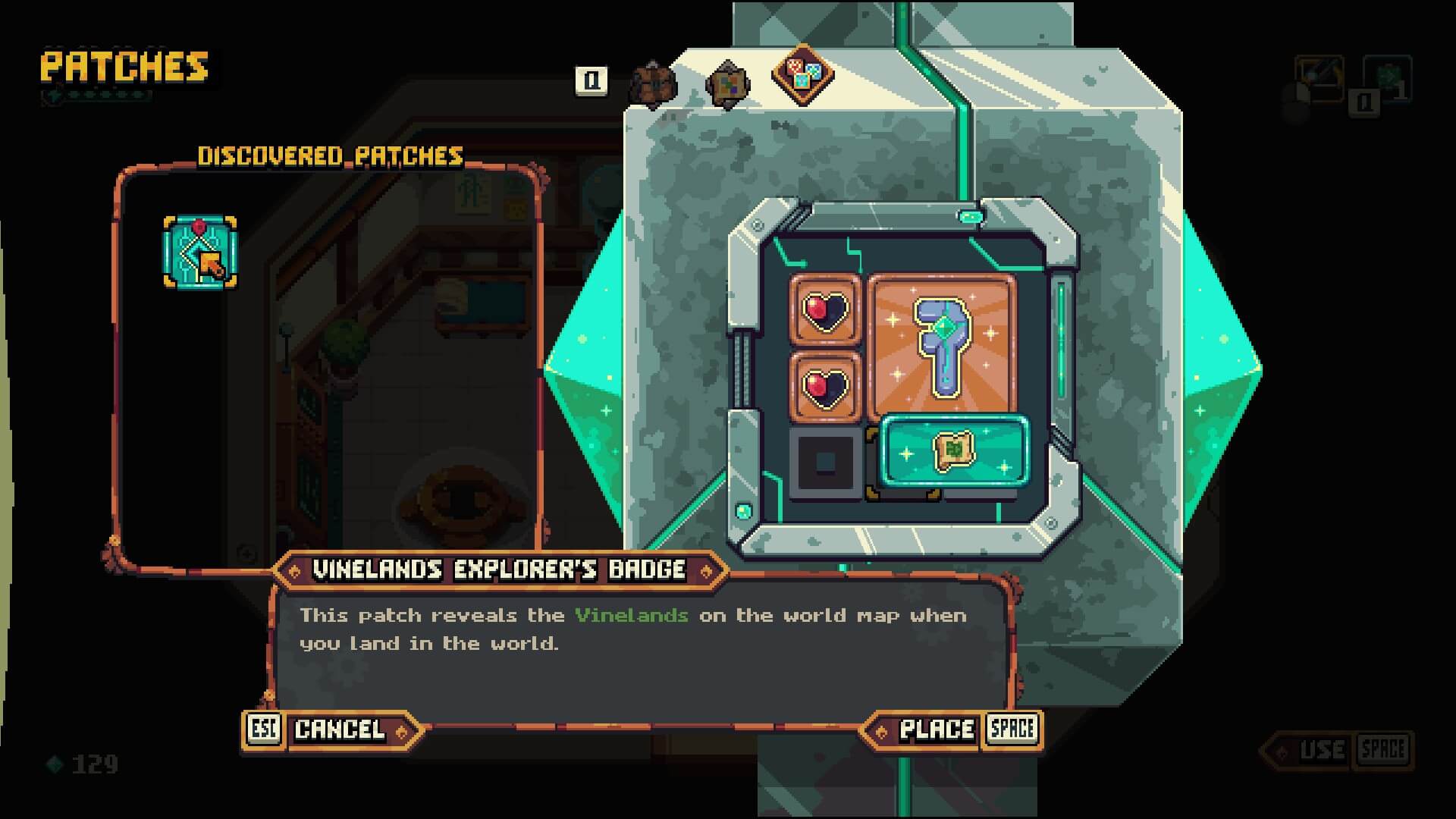
From such small beginnings….
The upgrades themselves cover the standard array (damage, defence, health, map, etc.) and are slotted into an expandable grid meaning you have to pick and choose which you want. Get two of the same level and you can fuse them together to free up space (for a fee, of course). The amount of patches available means you are free to tailor your playstyle to your preferences and desired difficulty. I opted for damage, defence and health over anything else, but there were other options tied to consumable items, extra attack options and the like.
You’re also free to join another player in local ‘assistive co-op’, although this feature is only unlocked after beating the first boss, in which the second player takes control of Ada’s robotic companion, Wingnut, to solve puzzles and dig up treasures. Whilst useful, it’s not critical to the game. With the press of a button, or key (the game can be played with a controller or the keyboard, although the devs recommend a controller), a solo player assumes control of Wingnut, leaving Ada in an idle animation.
Yes, its an Indie Roguelike game but it is no Binding of Issac.
The core gameplay loop, though simple like most roguelikes, served its purpose. It kept me coming back for just one more run, tempting me to challenge the next boss before shutting the game down. The bosses are varied, if few. With one per biome (plus the final boss), the devs weren’t forced to stretch to any odd attack patterns and none of them have any cheap attacks. Each felt distinct and I was happy with the number of attacks each possessed, meaning I couldn’t just recycle the strategy I’d used on the previous one.
Due to the way the system generates the map though, I did encounter a few problems. On one occasion, I entered a small cave and found an enemy trapped in a wall where I couldn’t get to it, and on a few others one of the hidden chests with a damage increase inside kept respawning, allowing me to collect the upgrade at will (which I didn’t). The biggest issue I had though was one memorable occasion when, in an area where everything must be killed to progress, an enemy jumped out of bounds and slid away, forcing me to restart the game and lose all progress up until that point.
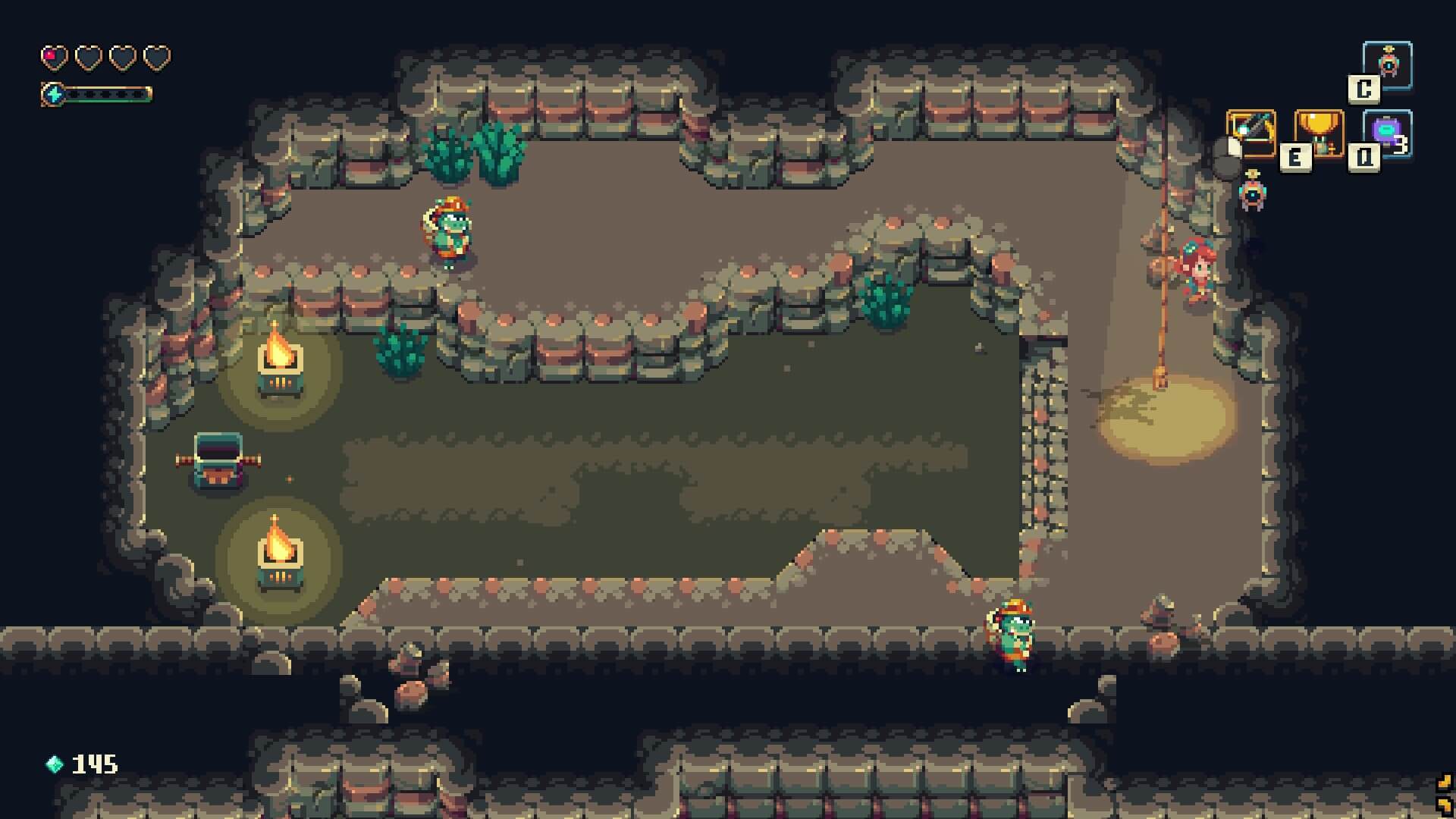
I don’t think they’re supposed to be there.
With each biome came a new palette and new enemies (recorded in a late-game building you can construct to gain a small damage buff). I was pleased to see few instances of palette-swapping; for the most part, creatures of the same type resemble each other but are visually distinct. This was a good way of tying enemies to the area of the world they belonged in (virulent green creatures in the Acid Bog, for example) whilst giving a rough idea of what they would do.
You can certainly add this to the roguelike games list of switch must plays
The vibrant, pixel-based art style was complemented by a soothing, almost lo-fi soundtrack that was almost completely at odds with the tension inherent in the roguelike genre. Don’t get me wrong, the music picked up during the boss fights but there was no one track which grabbed me as a standout. I haven’t found myself humming anything from the game since I completed it although I might boot it up every now and then to get lost in the relaxing music for a short while.
This is my main niggle with the game’s presentation generally: it works but there are no real standout features. The UI is minimal and conveys precisely the information you need and nothing more. It does everything it has to, and it does it with style and charm, but is largely lost among the bright colours of the game itself.
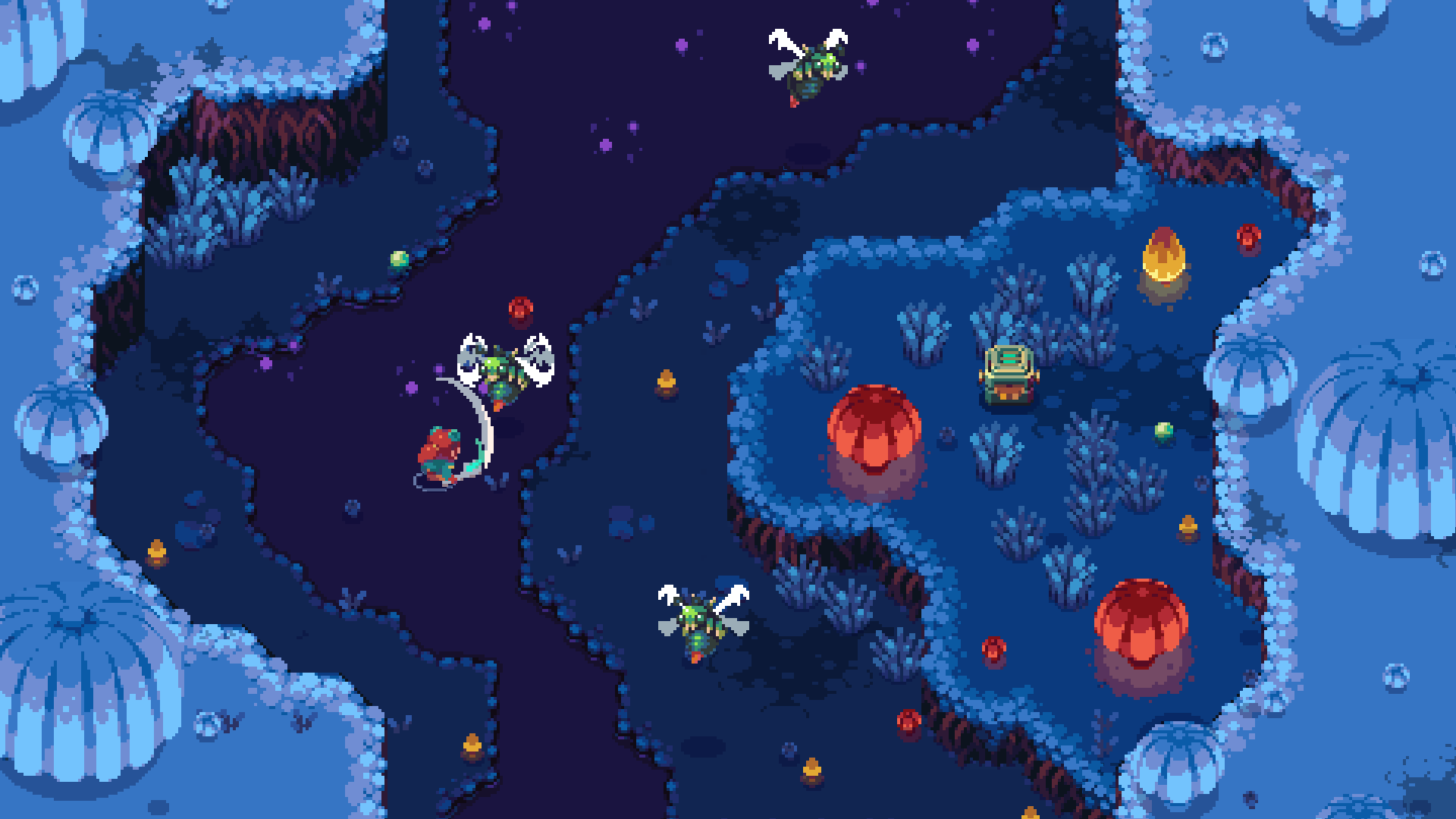
Buzz, buzz buzz
Those colours are bold, vivid and, on several occasions, lead to my death. I considered putting this with the discussion of gameplay, but I think it fits here better and works as a segue into the other niggles I have about Sparklite. For a genre relying on easy-to-read and clearly-defined attacks and enemy movement, there were a few stumbling blocks.
The enemy sprites, as gorgeous as they are, possess collision after death, leading to me getting caught on them a few times which, in turn, resulted in my own demise. More annoyingly however, is that the attack sprites (weapon swings, lightning bolts etc.) themselves had a hitbox. Whilst fighting the final boss, I found myself taking damage from the top of the lightning bolt where it extended outside of the clearly-defined attack circle on far too many occasions, and don’t get me started on those instances when the trail of a hammer swing hit me, rather than the hammer itself.
But if you can get over these problems (map generation bugs, sprite/hitbox issues and the lack of standout presentation) how long is the game? As I said, I beat it in around nine hours (three of which were attempts on the final boss spread between grinding for and purchasing upgrading) and I felt that I’d seen everything the game had to offer. There were a few side-quests I could have done before the final boss to improve my chances, and these would have added a large amount of time to my gameplay, but I didn’t feel the need to.
Sparklite can be picked up on Steam, Switch and PS4
For those who like collecting things though, there is at least one NPC in each biome to find, each of which gives you something for rescuing them. Two explorers will give you map patches to reveal parts of the map (although I only found I needed the first patch, as the first biome was the one I found myself navigating most often), a scientist who unlocks the previously mentioned lab and a couple of other NPCs give you options for quick sparklite generation (including a pirate-themed gameshow). The most useful NPC though was one I didn’t have to find. Hidden throughout the world are small creatures that need returning to the Refuge in order to play a complete song. Every so often, the NPC in charge of them rewarded me with a rare patch for finding a certain number, making my gameplay experience far easier than it might otherwise have been.
That’s it though. Outside of the roguelike loop of earn money, die, buy upgrades (and repeat) there is no real re-playability here other than attempting different character builds, which makes the £19.99 (on Steam) price tag the most I would be happy paying for it. There is a slightly more expensive option which includes the OST and if you do a lot of walking or working for home, you might find it worth the extra cost, but I wouldn’t advise paying more.
Sparklite or Sparklike :D ?
So, if you’re looking for a pleasingly (if vaguely) presented casual roguelike with a surprising variety in boss and enemy design and a story which does a decent job at providing stakes and an explanation for the gameplay systems, Sparklite might be for you. Just be warned that as of the time of writing, enemies can get out of bounds, some chests respawn unintentionally and there is no standout feature.
This is a unique blend of approachable roguelike elements, but unfortunately they’ve blended too well.

















